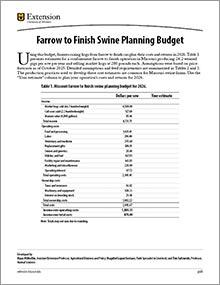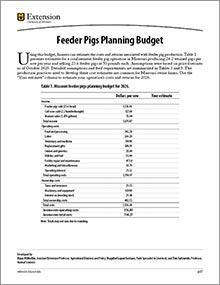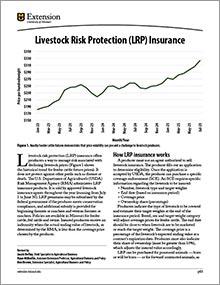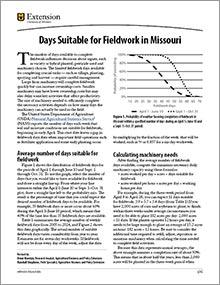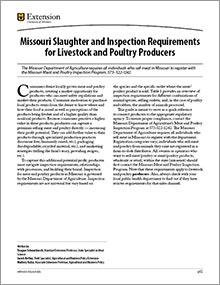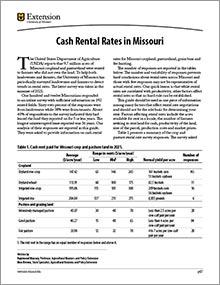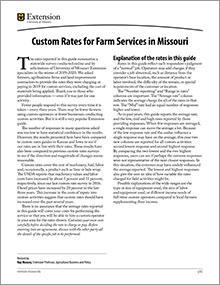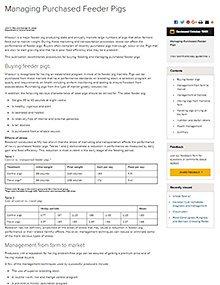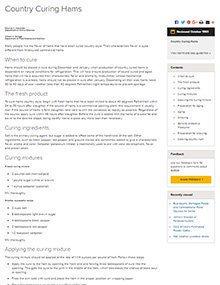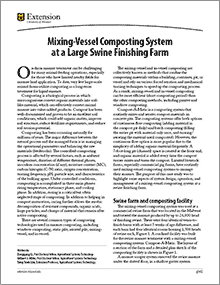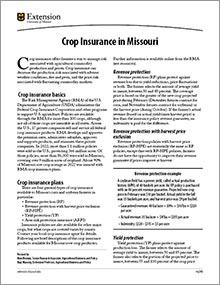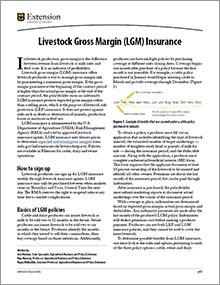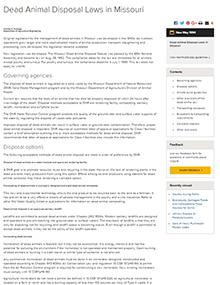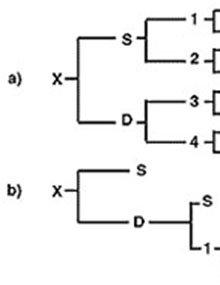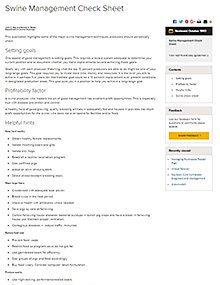The following publications cover topics related to Swine Extension. For a complete list of MU Extension publications, visit the main Publications page.
Calculating the Value of Manure as a Fertilizer Source
Revised
Use this worksheet to estimate the value of manure nutrients (nitrogen, phosphorus, potassium) and gauge how much manure to apply to corn, wheat, soybeans.
Farrow to Finish Swine Planning Budget
Revised
Use this swine enterprise budget to estimate costs and returns for a Missouri farrow-to-finish operation that produces 22 pigs/sow/year and sells hogs at 280 pounds.
Hog Finishing Planning Budget
Revised
Use this swine enterprise budget to estimate costs and returns for a Missouri hog finishing farm that buys 103 head of 40-pound pigs and sells 100 head of 280-pound hogs.
Feeder Pigs Planning Budget
Revised
Use this enterprise budget to estimate costs and returns for a Missouri swine operation raising feeder pigs, producing 22 pigs/sow/year and selling pigs at 40 pounds.
Livestock Risk Protection (LRP) Insurance
Revised
See how LRP insurance helps farmers manage market price volatility risk. Missouri producers may apply for feeder cattle, fed cattle, lamb and swine policies.
Days Suitable for Fieldwork in Missouri
Revised
Learn the number of days Missouri farms have available per week—due to weather and soil conditions—for tillage, planting, chemical application and harvest.
Farmland Values for Midwestern States
Revised
Find farmland value price trends in Missouri and other Midwestern states since 1912.
Pan Coverage: Controlling the Controllables to Improve Feed Utilization
New
Up to 15% of delivered feed is estimated to be wasted annually due to improper feed pan coverage and mismanaged feeders. Producers who focus on managing this critical factor can considerably enhance feed efficiency and improve profitability.
Cobertura en el Comedero: Controlando los Controlables para Mejorar la Utilización del Alimento
New
Se estima que hasta el 15% del alimento entregado se desperdicia anualmente debido a una cobertura inadecuada del plato de alimento y a una mala administración de los comederos. Los productores que se centran en gestionar este factor crítico pueden mejorar considerablemente la eficiencia alimenticia y mejorar la rentabilidad.
Missouri Slaughter and Inspection Requirements for Livestock and Poultry Producers
Revised
Missouri meat producers must register and meet inspection requirements to sell meat legally. Learn about species-specific regulations and compliance.
Cash Rental Rates in Missouri
Revised
Updated with 2024 survey data, this guide provides average cash rental rates for Missouri cropland and pastureland, aiding informed lease decisions.
Custom Rates for Farm Services in Missouri
Revised
Get custom service rates for fieldwork, planting, fertilizer, crop harvesting, hauling and heavy equipment activities from a survey of farmers, agribusinesses and contractors.
Biosecurity for Today’s Swine Operation
Reviewed
Disease control is one of the most challenging areas for producers in swine production. Visit our site to learn about Biosecurity for Today’s Swine Operation.
Managing Purchased Feeder Pigs
Reviewed
Learn how to reduce stress and improve performance in feeder pigs through proper buying, handling, and management practices from purchase to market.
Country Curing Hams
Reviewed
Many people like the flavor of hams that have been cured country style. Visit our site to learn about Country Curing Hames.
Mixing-Vessel Composting System at a Large Swine Finishing Farm
New
Learn about the mixing-vessel composting system used on large swine farms to treat manure efficiently and improve soil quality.
Crop Insurance in Missouri
Revised
Learn four types of crop insurance that can manage corn, soybean and other row crop risk. Read about units you can insure and the premium cost for a policy.
Livestock Gross Margin (LGM) Insurance
Revised
LGM insurance helps producers manage risk by guaranteeing a minimum gross margin. Learn how it works, and see cattle, swine and dairy examples in this guide.
5 Steps to Buying Meat Direct From the Farm
New
If you are interested in buying meat from a local farmer, in quarters or halves, review these five considerations: how much meat your family can consume and what cuts to buy, sourcing an animal, finding a local meat processor, costs, and timing.
Converting Unused Agriculture Facilities for Aquaculture Use: Swine Barn Conversion for Fish Culture
Revised
This guide provides basic information on recirculating aquaculture system (RAS) technology and converting a swine barn into an aquaculture enterprise.
Routine Animal Mortality Management Options in Missouri
Revised
Law requires that the body of an animal be disposed within 24 hours after death. Learn how to acceptably transport and dispose of animal carcasses.
Inbreeding: Its Meaning, Uses and Effects on Farm Animals
Reviewed
Mating schemes of animals are classified as either inbreeding or outbreeding. Mating closely related animals is inbreeding. Outbreeding is mating less closely related animals, but people disagree about where to draw the line. Learn more in this guide.
Swine Management Check Sheet
Reviewed
This publication provides a comprehensive checklist for swine producers, covering essential management practices from breeding to farrowing.
Dust, Odor and Gas Control in Swine Finishing Barns Through Oil Sprinkling
New
Sprinkling soybean oil in swine barns reduces dust, ammonia, and odors, improving air quality for workers and animals at a low cost per pig.

